Introduction
When a property owner files a claim, the insurance carrier typically sends out an adjuster to inspect the damage, verify the scope of loss, and determine the settlement amount. While this process may feel routine to carriers, it can be daunting for a business owner or homeowner—especially when the magnitude of damage and corresponding costs don’t align with the carrier’s initial estimate. Understanding how an insurance adjuster operates, what they look for, and how to set the stage for an accurate evaluation can significantly impact the outcome of your claim. Below, we’ll walk through what to expect during an adjuster visit, how to prepare beforehand, and strategies to ensure your interests are fully represented.
1. Who Is the Insurance Carrier’s Adjuster?
-
Independent vs. Company Employee:
-
Independent Adjusters are third‐party contractors hired on a per‐claim basis. They often juggle multiple assignments across regions.
-
Company Adjusters (also called staff or in‐house adjusters) work directly for the carrier. They may have more direct lines of communication with underwriters and claim examiners.
-
-
Primary Role: Verify the loss, assess damages, quantify repair or replacement costs, and recommend a settlement figure.
-
Limitations: Adjusters use carrier‐approved estimating software and internal guidelines, which can sometimes overlook unique or hidden damage. Their mission is to protect the carrier’s bottom line, not necessarily to identify every possible line‐item in favor of the policyholder.
2. Why Your Preparation Matters
-
First Impression ≠ Final Verdict
Although your initial meeting with the adjuster sets the tone, any new information (photos, invoices, expert reports) submitted afterward can still influence the final settlement. However, leaving out critical documentation during the on‐site visit can create gaps in the claim. -
Documentation Is King
-
Detailed photo logs, pre‐loss condition records, repair estimates, and maintenance invoices help substantiate your position.
-
If you can show maintenance logs proving routine upkeep (e.g., roof inspections, gutter cleanings), you reinforce that the loss stems from covered peril (e.g., hail, wind) rather than wear and tear.
-
-
Managing Expectations
-
The carrier’s adjuster may “low‐ball” certain line items—like underestimating Code Upgrade costs or excluding necessary demolition/replacement elements. Being equipped with comprehensive documentation ensures you can counterbalance any omission or undervaluation.
-
3. Pre‐Inspection Checklist
Before the adjuster arrives, take these steps to ensure nothing is overlooked:
-
Compile All Relevant Documents
-
Policy Declaration Page: Ensure you have the most recent version that reflects endorsements or amendments.
-
Photos & Videos: Capture clear, timestamped images of all damaged areas from multiple angles. Aerial shots (via drone or ladder) are invaluable for roof damage.
-
Maintenance Records: Include invoices for routine maintenance (e.g., roof inspections, HVAC servicing, façade repairs).
-
Repair Estimates & Invoices: If you’ve already engaged contractors for emergency repairs or mitigation, have those estimates and invoices on hand.
-
Pre‐Loss Condition Evidence: If possible, locate photos or records that show the property’s condition prior to the loss—especially for areas where the carrier might claim pre‐existing wear and tear.
-
-
Identify & Mark Damaged Areas
-
Walk through the property at least once, taking note of every visible sign of damage: water stains, missing shingles, membrane punctures, ceiling cracks, or compromised flashing.
-
Use bright-colored tape or chalk to mark areas needing attention. When the adjuster arrives, guide them directly to each spot rather than waiting for them to discover it.
-
-
Organize a Claim Folder
-
Create a physical or digital folder (e.g., Dropbox, Google Drive) structured into subfolders: “Photos & Videos,” “Maintenance,” “Estimates,” “Policy,” and “Correspondence.”
-
Label every file clearly with dates and brief descriptions (e.g., “2025-05-12_RoofDamage_AreaA.jpg”).
-
-
Coordinate Access & Safety
-
If there are locked mechanical rooms, secured roof hatches, or gated areas, make sure someone can open them for the adjuster.
-
Address any immediate hazards (e.g., unstable flooring, live electrical wires) ahead of time—both for safety and to avoid delays.
-
4. What Happens During the On‐Site Visit
-
Introductions & Overview
-
The adjuster typically begins with a brief introduction, explaining their role and what they’ll inspect. They may start on one end of the property and work methodically.
-
If you have a public adjuster or legal counsel present, introduce them early; maintaining a collaborative, professional demeanor fosters productive dialogue.
-
-
Inspection of Damage
-
The adjuster will visually inspect all reported areas of loss—roof, interior finishes, mechanical systems, structural elements, etc.
-
They’ll measure, photograph, and take notes. Bear in mind that their photos are intended to build the carrier’s claim file; yours should be more comprehensive.
-
-
Discussion of Cause & Scope
-
Expect questions such as:
-
“When did you first notice the damage?”
-
“Have any temporary repairs been made?”
-
“When was the last routine maintenance on this system?”
-
-
Be factual and concise—avoid speculation. If you’re uncertain (e.g., exact date of first noticing damage), provide the best possible timeframe or defer to documentation.
-
-
Review of Documentation
-
The adjuster may ask to see your photos, maintenance logs, and estimates. Have printed copies or a tablet ready to share digitally.
-
If you have a contractor’s scope of work or schematic drawings showing hidden damage (e.g., mold behind drywall), now is the time to share them.
-
-
Final Questions & Next Steps
-
Before departing, the adjuster often summarizes their findings and outlines the next steps—additional engineering reports, peer review, or requests for further documentation.
-
Ask: “What additional information would help you finalize your estimate?” If they mention missing line items (e.g., code upgrades, debris removal, alternative accommodations), note them for follow-up.
-
5. Common Adjuster Pitfalls & How to Counteract Them
-
Underestimating Hidden or Secondary Damage
-
Pitfall: Adjusters focus on visible damage and may omit latent issues (e.g., insulation saturation, sub‐substrate mold).
-
Counter: Bring a moisture meter reading, infrared imaging, or contractor reports—anything that reveals water migration beyond the obvious.
-
-
Ignoring Code Upgrade Requirements
-
Pitfall: Carriers sometimes exclude the extra costs needed to bring older systems up to current building codes.
-
Counter: Provide local code citations (e.g., “2021 International Building Code, Section R907”) and contractor letters specifying mandatory upgrades.
-
-
Depreciation & Actual Cash Value Calculations
-
Pitfall: Insurers often calculate depreciation using tables that assume maximum useful life—this can undervalue an item that was in near‐new condition.
-
Counter: Show proof of age and condition (e.g., purchase receipts, service records) to demonstrate true remaining value.
-
-
Scope Creep Delays
-
Pitfall: If the adjuster requests additional documents after leaving the site, the claim can stall indefinitely.
-
Counter: After the visit, immediately assemble any requested items and send via tracked email or another verifiable method—minimize the window for dispute.
-
-
Scheduling Conflicts & Time Constraints
-
Pitfall: An adjuster pressed for time may rush through and miss critical details.
-
Counter: Schedule the visit at a time when you can be fully present. Consider blocking off 2–3 hours on your calendar rather than a brief window.
-
6. How a Public Adjuster Can Enhance Your Position
-
Advocacy & Expertise
-
Public adjusters represent policyholders, not carriers. They speak the same estimating “language” as the carrier’s adjuster but advocate for a thorough scope.
-
They often identify line items the carrier’s adjuster may overlook—like additional posts for support framing, full tear‐off vs. overlay, or necessary insulation replacement.
-
-
Negotiation Power
-
A seasoned public adjuster can negotiate directly with the carrier’s claim department. They translate complex policy language into practical claim strategies, ensuring you receive all coverages owed (debris removal, code upgrades, temporary repairs).
-
-
Faster Resolution
-
By handling documentation, field measurements, and coding nuances (Xactimate, Symbility), a public adjuster can accelerate the claim process—reducing the back‐and‐forth and minimizing waiting periods.
-
7. Post‐Inspection Follow‐Up
-
Review the Carrier’s Estimate Thoroughly
-
Once you receive the insurer’s estimate, compare line by line against your contractor’s scope and your own documentation.
-
Look for omitted items (scupper repairs, edge metal replacement, mold remediation) or undervalued quantities (square footage of membrane, number of HVAC registers).
-
-
Submit Supplemental Documentation Promptly
-
If the carrier’s adjuster left items out, send a concise “Supplemental Claim Package” organized by category—e.g., “Roof Repairs,” “Interior Finish,” “Code Upgrades.” Include supporting invoices, code citations, and annotated photos.
-
-
Maintain Clear Communication
-
Keep a spreadsheet or folder tracking every piece of correspondence—date sent, recipient, method (email, portal upload), and a brief summary of the content.
-
If the carrier fails to respond within a reasonable timeframe (e.g., 10–14 business days after supplemental submission), follow up with a polite but firm reminder.
-
8. Sample Checklist for Your Adjuster Visit
Use this as a quick reference on the day of inspection:
-
Policy Declaration Page (with endorsements)
-
Folder (“Claim Documents”) containing:
-
Pre‐loss photos/videos (timestamped)
-
Post‐loss photos/videos (timestamped)
-
Contractor estimates & scopes of work
-
Maintenance & inspection invoices (past 2–3 years)
-
Mitigation or emergency repair invoices (e.g., tarp install)
-
-
Clearly mark all damaged areas with tape or chalk
-
Provide a site map or drawing (if available) highlighting damage zones
-
Ensure access to attic spaces, mechanical rooms, roofs, and secured areas
-
Arrange for a knowledgeable staff member (or public adjuster) to accompany the adjuster
-
Notebook or tablet to take notes during the inspection
-
Questions prepared to clarify any immediate concerns (e.g., “Will you need additional photos of the substructure?”)
9. Final Thoughts & Proactive Tips
-
Stay Organized from Day One
A well-structured claim folder—both digital and physical—demonstrates professionalism and helps fast‐track your settlement. -
Document Everything
Even routine maintenance photos or small repair invoices can become “evidence” that bolsters your claim. -
Ask Questions
If the adjuster mentions they can’t cover a particular item, ask, “Can you please cite the specific policy exclusion or limitation?” Understanding the carrier’s rationale helps you form a targeted rebuttal. -
Consider a Policy Review Pre‐Loss
Before any damage occurs, schedule an annual policy review with your broker or public adjuster. Being aware of coverage limits, sub limits, and required endorsements (e.g., ordinance & law, business interruption) ensures you’re not caught off guard when a claim arises:-
Do you have replacement cost coverage for all building elements?
-
Are your business personal property limits adequate?
-
Have you filed any endorsements for “Agreed Amount” or “Extended Replacement Cost”?
-
Conclusion
Preparing thoroughly for the insurance carrier’s adjuster visit is the single most impactful step you can take toward securing a fair settlement. From compiling a meticulously organized claim folder to coordinating access and documenting every inch of damage—each action bolsters your credibility and strengthens your negotiating position. If navigating this process feels overwhelming, don’t hesitate to engage a licensed public adjuster who can guide you through the inspection, clarify policy details, and advocate on your behalf. At Denton Claims Consulting, we work alongside property owners to ensure adjuster visits result in comprehensive, accurate evaluations—so you get the coverage you’ve paid premium for.

